7 Interior Door Color Ideas to Elevate Your Home Style
Choosing the right color for interior doors can change the feel of a home without a big renovation. It affects how rooms connect and can add personality to different spaces. Many people overlook doors when thinking about design, but their color plays an important role in the overall look.
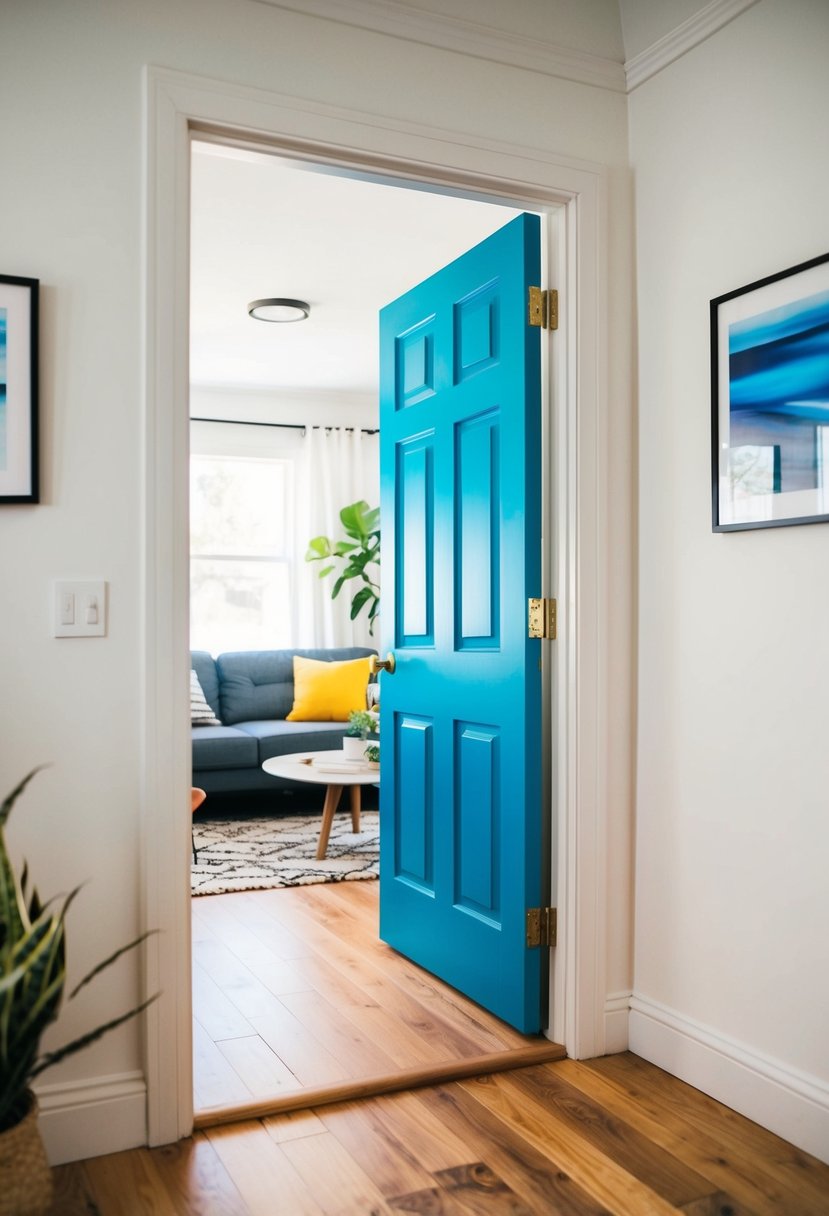
Interior door color ideas help create balance, contrast, or harmony within a room’s style. Whether someone wants a subtle tone or a bold statement, the right door color can enhance the home’s atmosphere and reflect personal taste. This article explores options and tips to inspire those decisions.
1) Classic White for a clean, timeless look
White doors create a simple and fresh appearance that fits many styles. They offer a clean and bright feeling without overwhelming the space.
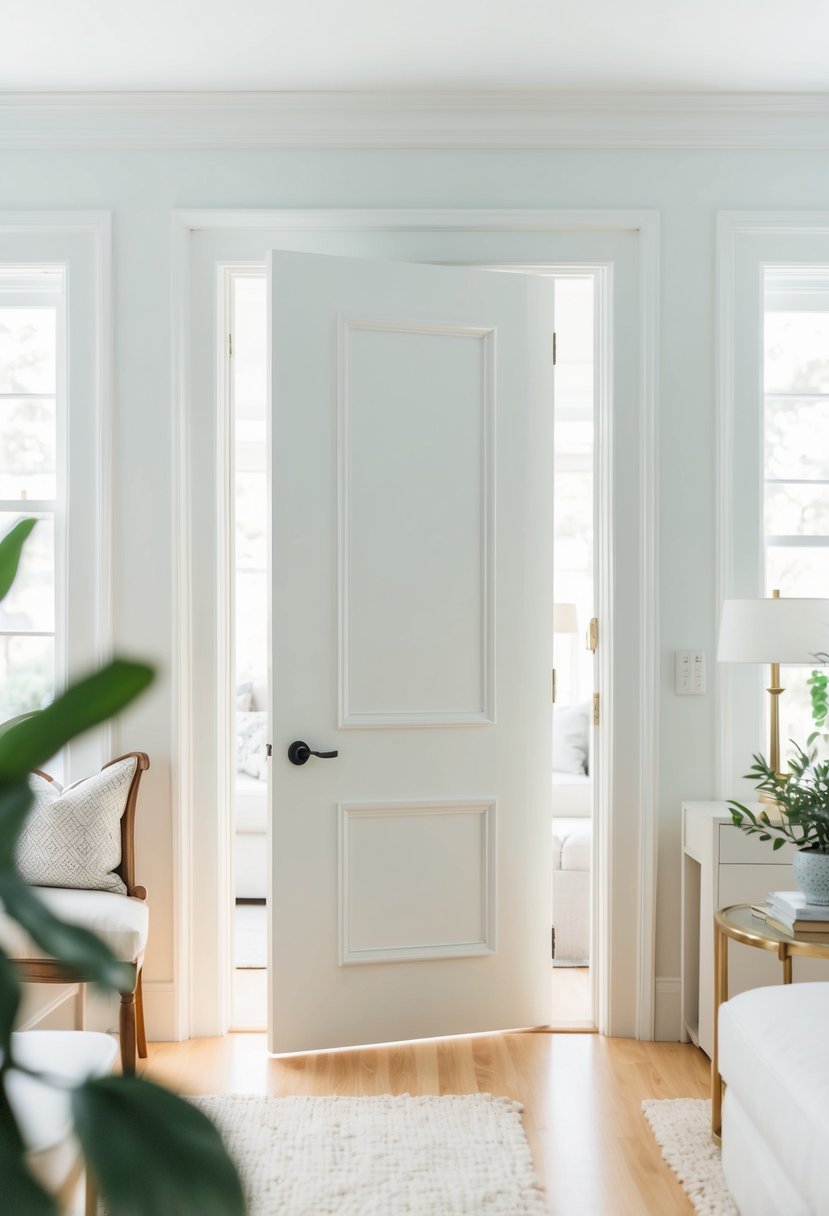
This color works well with almost any wall color or decor. Cool white shades, like off-white or soft gray-whites, keep the look modern and neat.
Choosing white doors helps maintain a timeless style. It avoids trends that may quickly feel outdated, making it a reliable choice for long-term appeal. For more ideas on white paint options, see the guide on white paint colors.
2) Deep Black to add drama and sophistication
Deep black doors create a strong, bold look in any room. This color adds a sense of drama without feeling too overwhelming.

Want to add instant elegance to your home? Painting your interior doors black is a bold move that delivers timeless sophistication. This sleek design choice adds depth and contrast, working beautifully with everything from modern minimalism to classic charm.
A popular pick like Sherwin Williams’ Tricorn Black offers a rich, deep hue that feels both dramatic and refined. Pair it with gold or brass hardware for a luxe touch, or match it with dark wood floors to create a seamless, high-end look. For even more inspiration, check out Pinterest and top home design blogs—you’ll find endless ways to make black doors the star of your space.
3) Soft Sage Green for a calming, natural vibe
Soft sage green brings a quiet and natural feeling to interior doors. It connects the space to nature without being too bright or overwhelming.
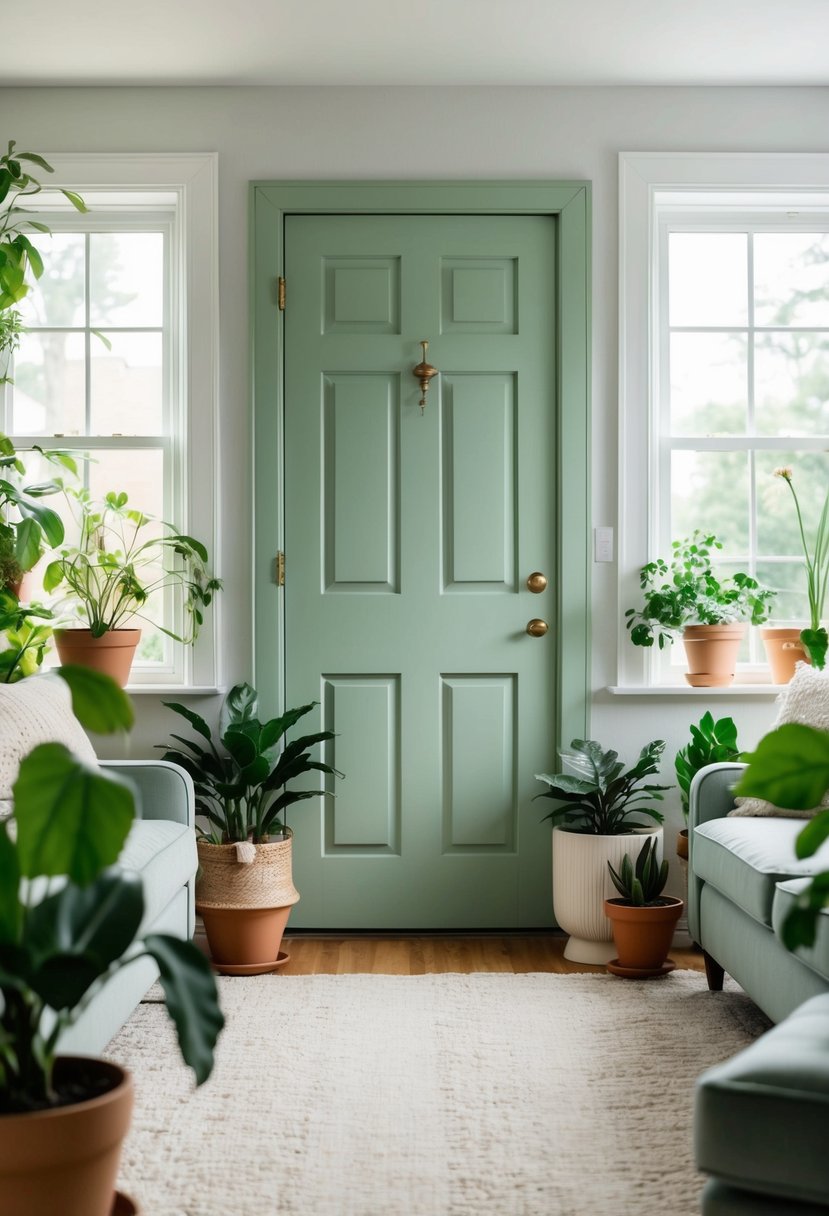
This color pairs well with warm neutrals like beige and taupe. It also works nicely alongside crisp whites and darker shades like navy or charcoal for contrast.
Using sage green on doors can help create a soothing atmosphere in a home. It fits well with many design styles, from modern to traditional.
For more ideas on using sage green indoors, see sage green door inspiration.
4) Iron Ore Gray by Sherwin Williams for modern elegance
Iron Ore Gray by Sherwin Williams is a deep, rich charcoal color. It often appears almost black, especially in low light.

This color works well for interior doors in modern or contemporary spaces. It adds a touch of sophistication without being too harsh.
Iron Ore pairs nicely with lighter walls and natural materials, creating a balanced look. It also complements earthy greens and soft neutrals.
Using Iron Ore on doors can create contrast and highlight architectural details. It is a popular choice for those seeking a versatile, elegant finish.
More about this color can be found on the Sherwin Williams Iron Ore page.
5) Brilliant Blue to create an inviting focal point
Using brilliant blue on interior doors adds a clear and attractive touch to any room. It draws attention and becomes a natural focal point.
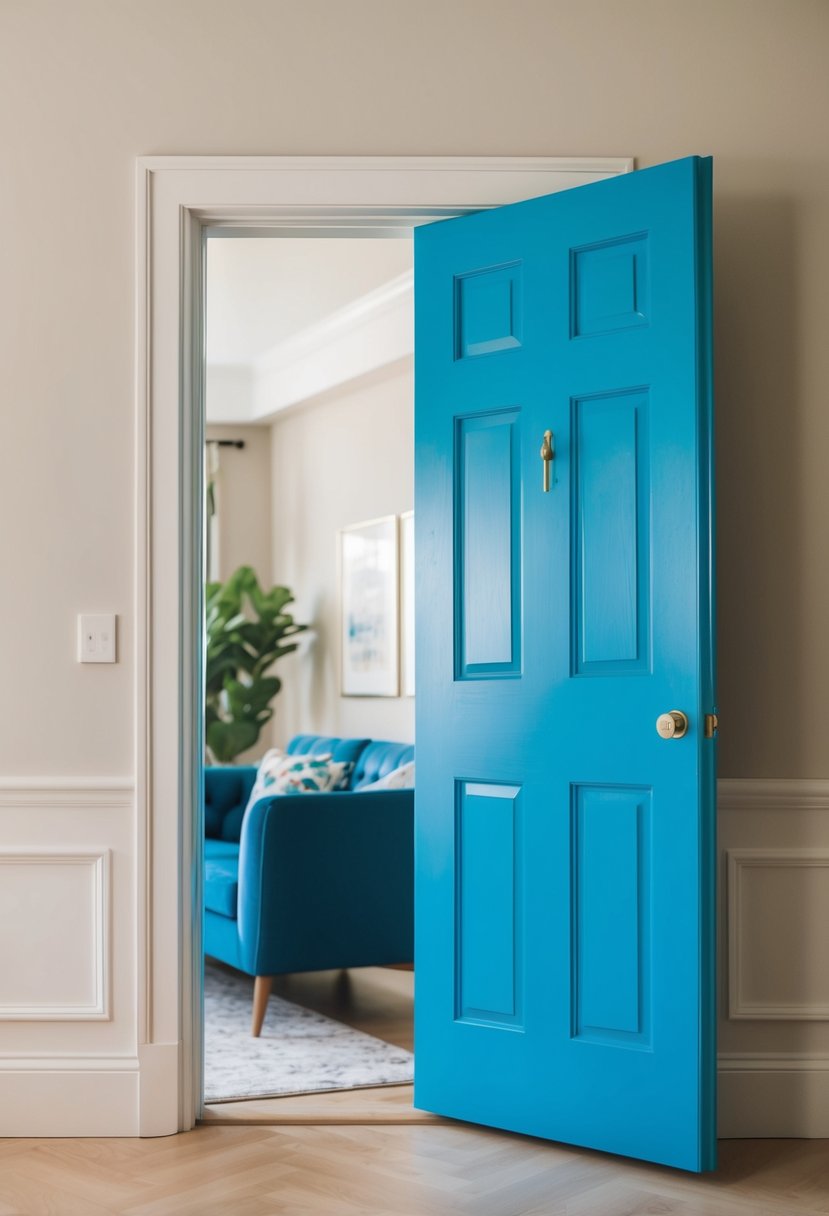
This color works well with neutral and light backgrounds. It brings energy without overwhelming the space.
Brilliant blue pairs nicely with soft whites and grays. It can tie together other blue accents like furniture or decor.
For a bold look, cobalt or royal blue shades make doors stand out. These tones create a welcoming and stylish entrance.
More ideas about blue interior doors can be found at Pinterest’s Blue Interior Doors Inspiration.
6) Benjamin Moore Revere Pewter for subtle warmth
Benjamin Moore Revere Pewter is a popular choice for interior doors. It offers a soft, warm gray tone that adds subtle warmth without overpowering a room.

The color has beige and green undertones, making it a versatile option. It works well with both cool and warm color schemes.
Revere Pewter is ideal for those who want a neutral look with a bit of depth. It fits well in modern and traditional spaces alike. Using it on doors can create a calm, connected feeling throughout the home.
More details about this color can be found at Benjamin Moore Revere Pewter paint review.
7) Boothbay Gray for a neutral yet stylish choice
Boothbay Gray is a medium blue-gray that adds calmness and depth to spaces. It blends cool gray with subtle blue-green undertones, creating a balanced and modern look.

This paint color works well with white trim, making interior doors stand out without being too bold. It suits many styles, from coastal to contemporary.
They often choose Boothbay Gray for doors when seeking a neutral color with a touch of sophistication. It pairs nicely with both lighter and darker shades for walls and accents.
More ideas about Boothbay Gray’s use on doors can be found on this Boothbay Gray coordinating colors page.
Color Psychology for Interior Doors
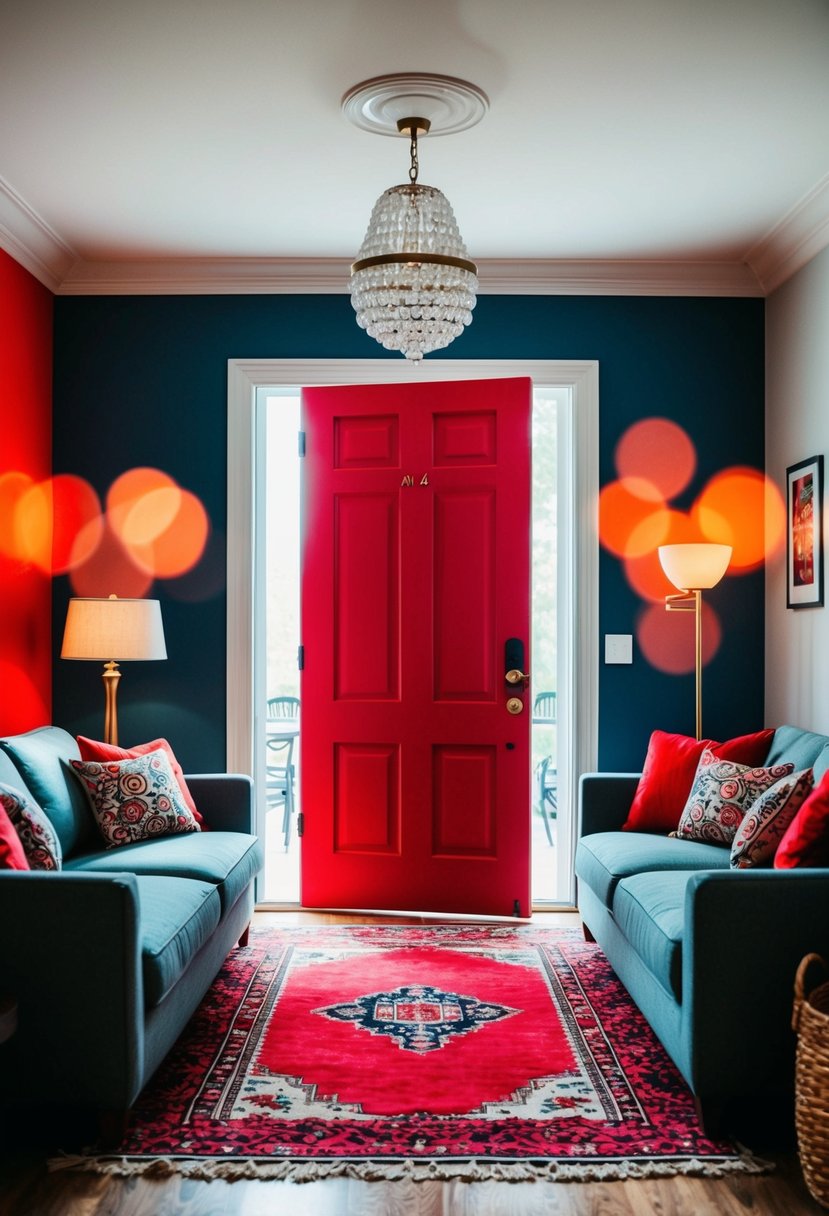
Colors on interior doors can set distinct feelings and change how people experience a room. Different colors carry meanings that affect mood and the overall vibe inside a home. These effects guide choices for door colors to fit specific needs.
Creating Mood With Door Colors
Colors influence emotions directly. For example, green doors can promote calmness and balance. Shades like emerald green add a touch of elegance, while softer greens bring a fresh, natural feel.
Dark colors such as black or navy suggest sophistication and power. Black doors offer drama and can ground a room with a strong statement. Meanwhile, blues often evoke calmness and trust, suitable for bedrooms or offices.
Choosing a door color based on mood means thinking about the desired feeling. Warm colors like red or orange bring energy, but can also feel intense if overused.
Influence on Room Ambiance
Door colors affect how space feels beyond mood. Light blue or pastel doors create an airy, welcoming atmosphere. They make rooms feel larger and more open.
Bold tones like sage green or deep navy can anchor an entryway or interior hallway, drawing attention and adding character. These choices often reflect personality and style while enhancing visual interest.
Using color strategically on doors can balance a neutral room or complement wall colors. This helps create harmony or contrast, depending on the effect sought.
For examples of stylish and effective interior door colors, view this article on chic interior door colors.
Coordinating Door Colors With Surroundings
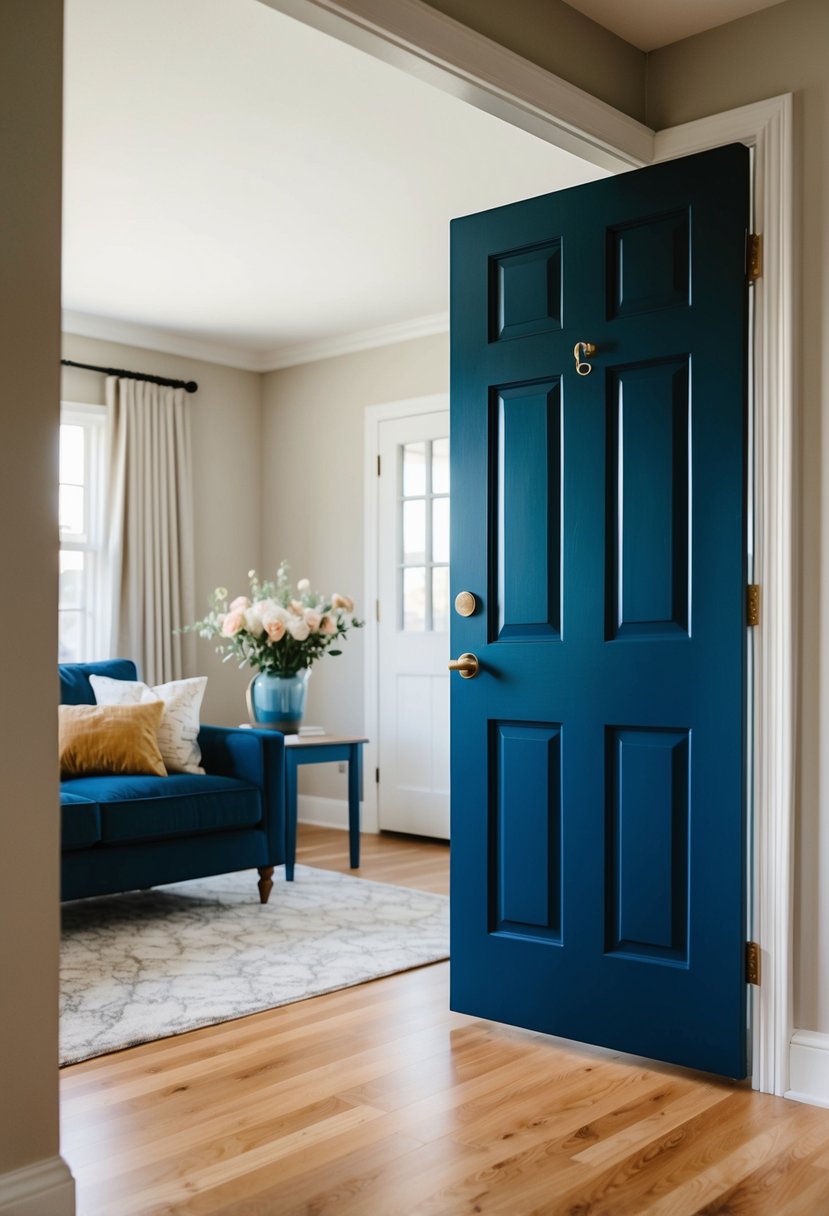
Choosing the right door color means thinking about how it interacts with nearby walls and other design elements. The goal is to create balance, so the door either blends in smoothly or becomes a deliberate highlight. Attention to contrast, harmony, and flow helps achieve this.
Matching Doors to Wall Paint
Matching door colors to wall paint can unify a room’s look. When walls are painted in neutral tones like beige, gray, or white, doors painted the same color can make the space feel seamless and larger.
However, exact matching is not always necessary. Slightly lighter or darker shades than the wall color work well to create subtle depth without clashing. For example, a soft gray door paired with pale gray walls keeps the look cohesive but adds dimension.
When matching, avoid colors that are too close but not exact, as this can cause visual confusion. It helps if door edges and trims are painted the same as the door for clean, polished lines.
Accent Doors and Visual Flow
Accent doors use bold or contrasting colors to create a focal point or define areas within a home. These doors often stand out from surrounding walls to add interest.
Choosing an accent color should consider the room’s overall palette. Colors like deep blue, forest green, or matte black can provide sophistication without overwhelming the space.
Maintaining visual flow means repeating accent colors in small amounts elsewhere, such as in cushions or decor. This repetition ties the door to the whole room.
To keep balance, avoid clashing with other dominant colors in the space. Use a color wheel or design tool to ensure complementary pairing. Accent doors are common in homes aiming for stylish and coordinated looks.
Conclusion
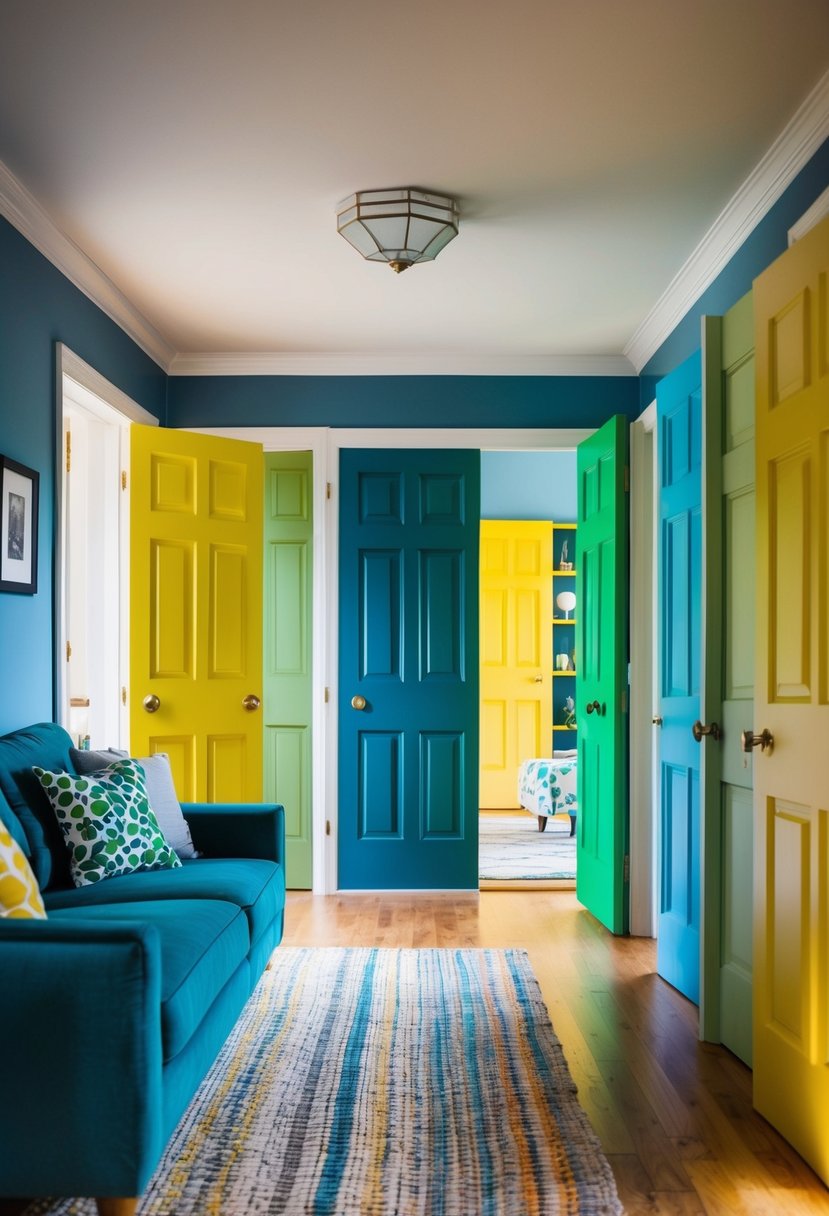
Choosing the right interior door color can change the look and feel of a room. It offers a chance to add personality or keep the space calm and neutral.
Bold colors like deep navy or rich emerald create a modern touch. Softer shades such as light gray, beige, or cream bring elegance and brightness. White trim pairs well with darker door colors for contrast and balance.
When picking a color, it’s important to consider the room’s overall style. The door should either stand out as a feature or blend smoothly with the surrounding decor.
Here are a few tips to remember:
- Match the door color with room accents for a coordinated look.
- Use lighter colors to open up small spaces.
- Choose darker, bold colors to add depth and interest.
By focusing on these ideas, anyone can update their interior doors in a way that fits their home’s style and atmosphere. For more ideas, see interior door color ideas that offer a lasting impression.





